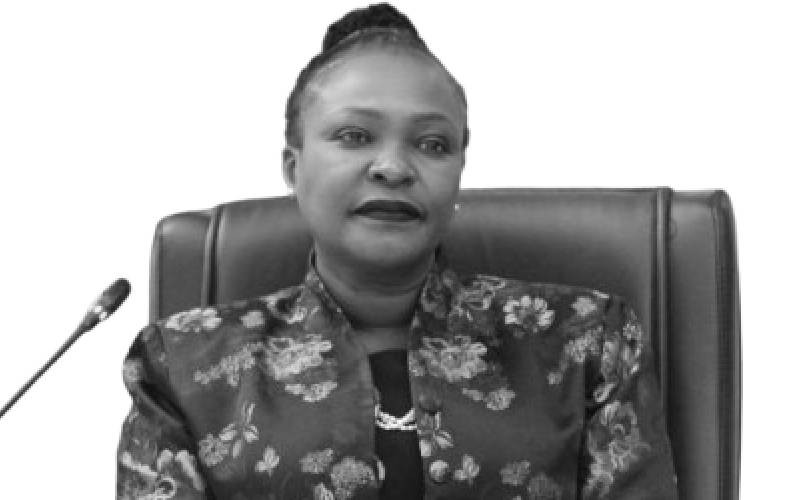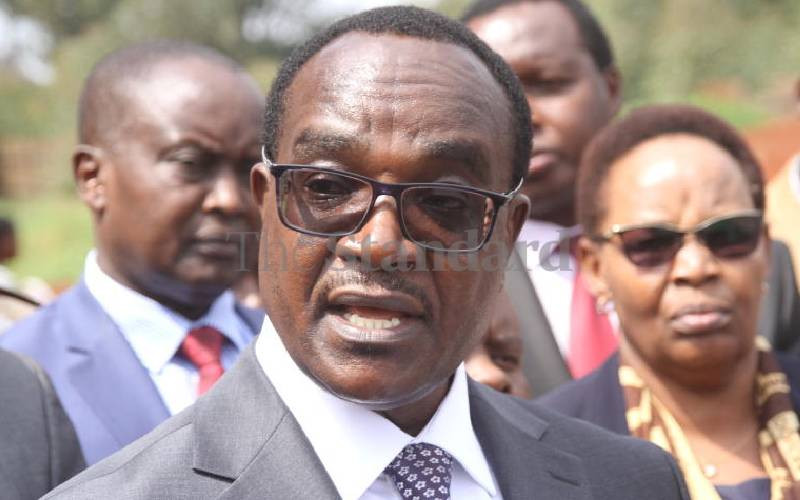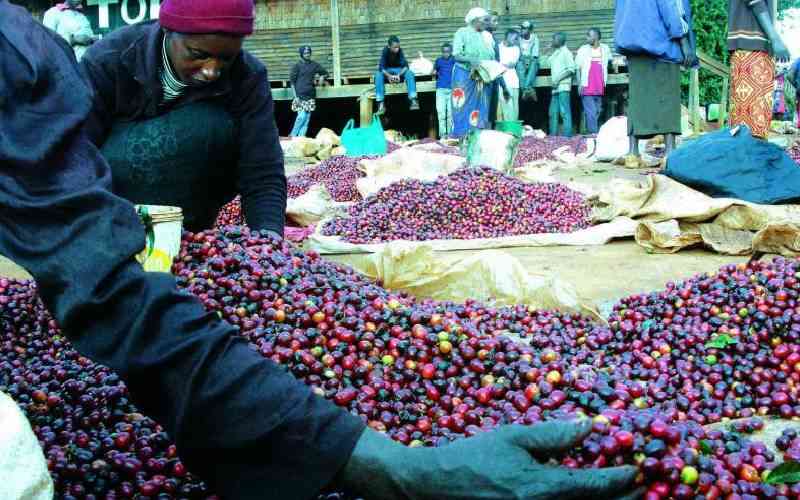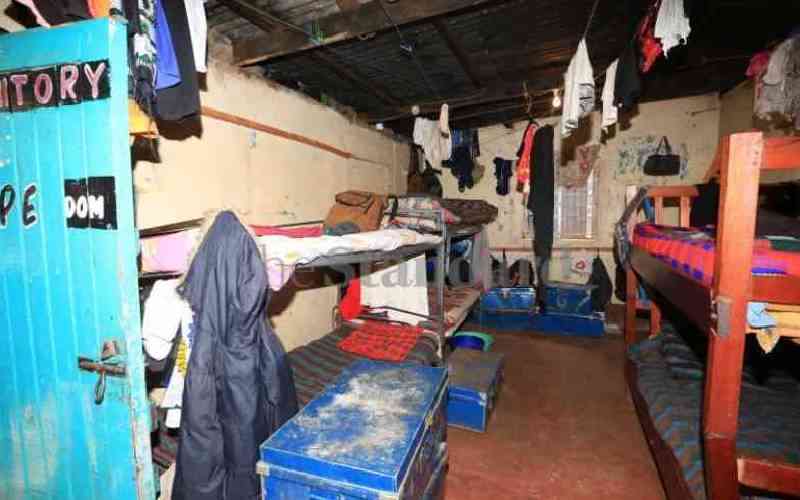A schooling crisis in most countries in Sub-Saharan Africa is emerging, as only one out of 10 young people will be on track to gain basic secondary education level skills by 2030, according to the International Commission on Financing Global Education Opportunity.
In a report, The Learning Generation: Investing in Education for a Changing World, the commission pointed out that in many countries, education is not improving as only half of primary-school aged children and little more than a quarter of secondary-school aged children are learning basic primary and secondary-level skills.
The crux of the matter is that despite the promises made by governments in the region, in real terms, investments in basic education have flat-lined and too often money invested has led to disappointing results.
Big blow
But another big blow to schooling in the region is that global aid for education in Africa has increasingly blurred on the radar of donor countries. Highlighting the issue two weeks ago, Unesco’s International Institute for Educational Planning (IIEP) warned that aid to education has stagnated.
In a policy briefing paper, Aid to Education is Stagnating and Not Going to Countries Most in Need,’ IIEP said for the sixth year in a row, education has had a declining proportion of the overall overseas aid budget, especially in poorer countries in Sub-Saharan Africa.
“The aid to education landscape is changing and had been falling since 2010,” said IIEP. The issue is serious in that although the region has more than 32 million out-of-school children that accounts to 53 per cent of the world’s children who have no access to education, it is now getting half of the share of aid to basic education it was receiving in 2002.
Unesco says Sub-Saharan Africa is getting 26 per cent of total global aid to basic education, in contrast to the 22 per cent allocation to the northern Africa and western Asia region, where only nine per cent of children are out of school. Hard hit is the financial support that would ensure a primary place for every child in the region, leave alone access to secondary education.
At the current rate of progress, UNESCO has forecast that it will be about 2040 before universal access to primary school is achieved in Sub-Saharan Africa. Besides, it will not be until 2084 that all young persons in the region will have access to upper secondary schooling, despite campaigns to reach the target before 2050.
The issue of financing basic education in Sub-Saharan Africa is made more complicated not just by flattening of budget allocations but on what the resources are being spent on.
According to Borel Foko, an education economist at the African Development Bank, most finances allocated to education are spent on teachers’ salaries. In Kenya, the share of teachers’ remuneration currently stands at 56 per cent of the basic education budget.
According to a senior education officer at the Teachers Service Commission (TSC), teacher salaries as a fraction of expenditure on basic education has reduced as a result of capitation grants in free primary education and free day secondary education introduced in 2003 and 2008 respectively.
However, there is nothing to celebrate yet as a large segment of Kenya’s primary and secondary schools are not doing well taking into account that some of the best and worst performing schools in East Africa are in the country. Uwezo, a regional educational assessment advocacy group has shown that on average, a Standard 3 child schooling in a certain district in rural area is over seven times more likely to have attained a Standard 2 level of literacy and numeracy than a child in another district in the country.
Equity gaps
“Such equity gaps are making it hard for Kenya to fix its education system in comparison to its partners in the East African Community,” says Suvojit Chattopadhyay, a development specialist with Adam Smith International in Nairobi.
Stay informed. Subscribe to our newsletter
Nonetheless, even as Kenyans prepare for enhanced free secondary schooling stemming from promises being made by Jubilee and NASA, there are foot-marks that political expediency is likely to supersede needs for adequate preparation and planning of education no matter the political divide that wins the August 8 elections.
According to Christopher Colclough, a professor of education at the University of Cambridge and a keen watcher of development of education in Sub-Saharan Africa, aid to education in Kenya is likely to remain project-based and whereas educational objectives of the government are listened to, donors would only provide financial support if such projects are considered credible.
In this regard, there are no indicators that donors would be falling over each other scrambling to fund enhanced free secondary learning as it happened in advent of free primary education in 2003.
In this regard, aid to education in Kenya, as elsewhere in Sub-Saharan Africa, is likely to remain modest relative to the government’s education expenditure. Whereas free secondary learning would reduce education burden on poor households, in the eyes of donor community, such gains are more or less political sideshows that are outside the global goals of universalising quality free primary education by 2030.
So far, there are significant learning shortfalls in primary education in Kenya which impinge on pupils’ starting points in secondary education.
“The percentage of students achieving the basics of learning to read in primary school has been falling and inequalities widening,” says Susan Nicolai, a senior research fellow at the London-based Overseas Development Institute, in a case study, Beyond Basic: The Growth of Post-primary Education in Kenya, that was released a few weeks ago.
But for now, the main worry is that traditional donors providing aid to education in Sub-Saharan Africa and other low-income countries are shifting their attention from those countries despite making pledges. In terms of national contributions, the US and Britain were the two largest donors to basic education, but their allocations have decreased by 11 per cent and nine per cent respectively and Unesco warns further reductions might be on the card.
Bearing this in mind, there is urgent need for Kenya and other affected countries to start balancing their political agenda when crafting education policies and their subsequent spending decisions. For instance, granted that providing enhanced free secondary education would reduce household costs among parents, is this really a good decision when there are over one million children who have never been to school?
Major donors
According to a World Bank report, most of such children are not in school, principally because of lack of schools closer to home, as well as for adverse opportunity costs. A better decision would have tried to know more about the out-of-school children and thereafter design policies to have those children in school.
Citing indices of poverty as the main cause of children staying out of school in Kenya and other African countries, the report, Education in Sub-Saharan Africa: A Comparative Analysis, argues it would be a good delivery service to offer a complete cycle of primary schooling to all children, even in small schools.
No doubt there is need for Kenyans to know why every child is not getting a chance at free primary education, as well as why so many children that are in school are not learning properly. As Unesco has pointed out, non-fulfillment of pledges of aid to education by major donors is going to hurt development of basic education in a region where provision is always not enough.
Taking this into account, there is concern as why countries that cannot provide every child with pre-primary or primary education introduce enhanced free secondary schooling that would cover students who tend to come from economically better off backgrounds than those out-of-school children?
 The Standard Group Plc is a
multi-media organization with investments in media platforms spanning newspaper
print operations, television, radio broadcasting, digital and online services. The
Standard Group is recognized as a leading multi-media house in Kenya with a key
influence in matters of national and international interest.
The Standard Group Plc is a
multi-media organization with investments in media platforms spanning newspaper
print operations, television, radio broadcasting, digital and online services. The
Standard Group is recognized as a leading multi-media house in Kenya with a key
influence in matters of national and international interest.
 The Standard Group Plc is a
multi-media organization with investments in media platforms spanning newspaper
print operations, television, radio broadcasting, digital and online services. The
Standard Group is recognized as a leading multi-media house in Kenya with a key
influence in matters of national and international interest.
The Standard Group Plc is a
multi-media organization with investments in media platforms spanning newspaper
print operations, television, radio broadcasting, digital and online services. The
Standard Group is recognized as a leading multi-media house in Kenya with a key
influence in matters of national and international interest.









